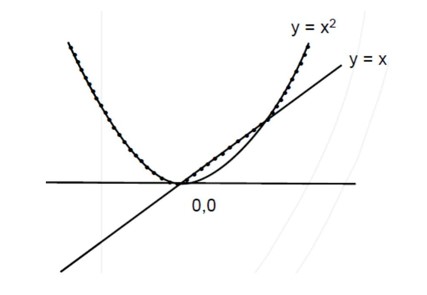Maths Continuity and Differentiability
Get insights from 53 questions on Maths Continuity and Differentiability, answered by students, alumni, and experts. You may also ask and answer any question you like about Maths Continuity and Differentiability
Follow Ask QuestionQuestions
Discussions
Active Users
Followers
New answer posted
2 months agoContributor-Level 10
The functional equation f (x+y) = f (x)f (y) implies f (x) = a? for some constant a.
Then f' (x) = a? ln (a).
Given f' (0) = 3, we have a? ln (a) = 3 ⇒ ln (a) = 3 ⇒ a = e³.
So, f (x) = e³?
We need to evaluate the limit: lim (x→0) (f (x)-1)/x = lim (x→0) (e³? -1)/x.
Using the standard limit lim (u→0) (e? -1)/u = 1, we can write:
lim (x→0) 3 * (e³? -1)/ (3x) = 3 * 1 = 3.
New answer posted
2 months agoContributor-Level 10
To find the values of a and b, we evaluate the left-hand limit (LHL) and right-hand limit (RHL) at x=0 and equate them.
LHL: lim (x→0) sin (a+3)/2 * x / x = (a+3)/2. The full limit evaluates to (a+3)/2. So, (a+3)/2 = b.
This gives the relation a - 2b + 3 = 0 — (I)
RHL: lim (x→0) [√ (x+bx³) - √x] / (bx²).
Rationalize the numerator:
lim (x→0) [ (x+bx³) - x] / [bx² (√ (x+bx³) + √x)]
= lim (x→0) bx³ / [bx² (√x (√ (1+bx²) + √x)]
= lim (x→0) x / [√x (√ (1+bx²) + 1)] = lim (x→0) √x / (√ (1+bx²) + 1) = 0/2 = 0.
So, b = 0.
Substituting b=0 into equation (I): a - 2 (0) + 3 = 0 ⇒ a = -3.
New answer posted
2 months agoContributor-Level 10
The problem provides an equation involving the coordinates (α, β, γ) of a point P:
((α + β + γ) / √3)^2 + ((α - nγ) / √(l^2 + n^2))^2 + ((α - 2β + γ) / √6)^2 = 9
The locus of P(α, β, γ) is given by replacing (α, β, γ) with (x, y, z):
((x + y + z) / √3)^2 + ((lx - nz) / √(l^2 + n^2))^2 + ((x - 2y + z) / √6)^2 = 9
This represents the equation of an ellipsoid. The text proceeds by comparing coefficients. By expanding the equation, the coefficients of x^2, y^2, z^2, and cross-product terms are collected. From the given conditions:
Coefficient of x^2: 1/3 + l^2 / (l^2 + n^2) + 1/6 = 1
Coefficient of y^2: 1/3 + 0 + 4/6
New answer posted
2 months agoContributor-Level 10
cos(x)(3sin(x) + cos(x) + 3)dy = (1 + ysin(x)(3sin(x) + cos(x) + 3))dx
This seems mistyped. A more likely form is:
dy/dx - (sin(x)/(cos(x)))y = 1 / (cos(x)(3sin(x) + cos(x) + 3))
dy/dx - tan(x)y = sec(x) / (3sin(x) + cos(x) + 3)
The integrating factor (I.F.) is:
I.F. = e^∫(-tan(x))dx = e^(ln|cos(x)|) = cos(x).
Multiplying by I.F.:
d(y*cos(x))/dx = 1 / (3sin(x) + cos(x) + 3)
y*cos(x) = ∫ dx / (3sin(x) + cos(x) + 3)
Using Weierstrass substitution, let t = tan(x/2):
sin(x) = 2t/(1+t²), cos(x) = (1-t²)/(1+t²), dx = 2dt/(1+t²)
∫ (2dt/(1+t²)) / (3(2t/(1+t²)) + (1-t²)/(1+t²) + 3)
= ∫ 2dt / (6t + 1 - t² + 3 + 3t²) = ∫ 2dt / (2t² + 6t
New answer posted
2 months agoContributor-Level 10
-5 ≤ [x/2] < 5
I ⇒ [x/2] = -5, -4, -3, -2, -1,0,1,2,3,4
Hence, function is discontinues at = -4, -3, -2, -1,1,2,3,4 Number of values is 8.
New answer posted
2 months agoContributor-Level 10
-5? [x/2] < 5
I? [x/2] = -5, -4, -3, -2, -1,0,1,2,3,4
Hence, function is discontinues at = -4, -3, -2, -1,1,2,3,4 Number of values is 8.
New answer posted
2 months agoContributor-Level 10
f (x) is differentiable then will also continuous then f (π) = -1, f (π? ) = -k?
k? = 1
Now f' (x) = { 2k? (x-π) if x≤π
{ -k? sinx if x>π
then f' (π? ) = f' (π? ) = 0
f' (x) = { 2k? if x≤π
{ -k? cosx if x>π
then 2k? =k?
k? = 1/2
New question posted
2 months agoNew answer posted
2 months agoContributor-Level 10
Since, lim (x→0) f (x)/x exist ⇒ f (0) = 0
Now, f' (x) = lim (h→0) (f (x+h)-f (x)/h = lim (h→0) (f (h)+xh²+x²h)/h (take y = h)
= lim (h→0) f (h)/h + lim (h→0) (xh) + x²
⇒ f' (x) = 1 + 0 + x²
⇒ f' (3) = 10
Taking an Exam? Selecting a College?
Get authentic answers from experts, students and alumni that you won't find anywhere else
Sign Up on ShikshaOn Shiksha, get access to
- 65k Colleges
- 1.2k Exams
- 679k Reviews
- 1800k Answers

